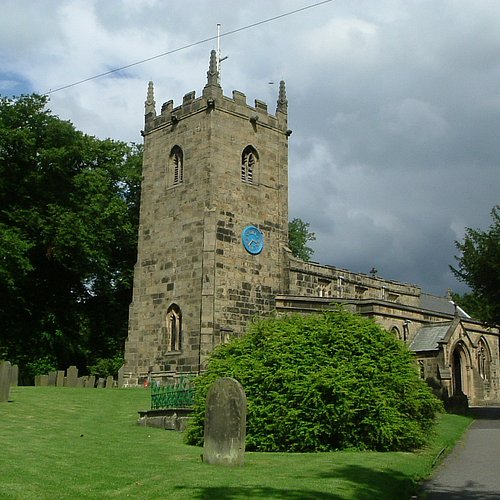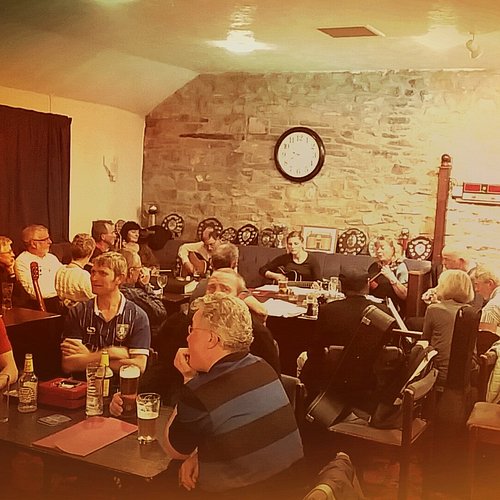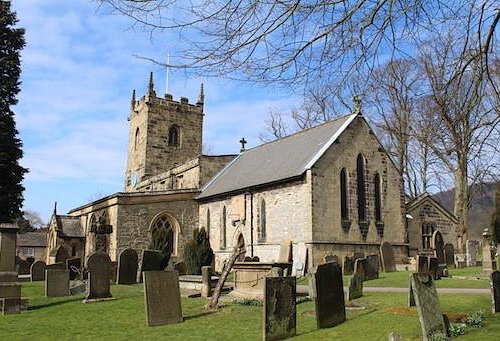8 Things to do in Eyam That You Shouldn't Miss
Discover the best top things to do in Eyam, United Kingdom including Riley Graves, Eyam Plague Village Museum, Eyam Village Club/Mechanics Institute, Eyam Parish Church of St Lawrence, Eyam Hall & Craft Centre, Mompesson’s Well, Eyam Real Ale Company, Eyam National Trust Guided Walks.
Restaurants in Eyam
1. Riley Graves
Overall Ratings
5.0 based on 6 reviews
Reviewed By 997briant - London, United Kingdom
This is an incredibly poignant memorial, and a seriously somber reminder of the devastating effects the Bubonic Plague had as it swept swiftly through the Derbyshire village of Eyam in 1665 and 1666. And its wider symbolism to today’s pandemic situation cannot be overlooked. It’s isolated, as many of us have done so over the past year. And it symbolises the sadness associated with the losses many of us have also endured during the current pandemic. In Riley’s Field on the eastern side of Eyam village is an egg-shaped enclosure surrounded by a drystone wall and containing 6 vertical headstones and a table tomb. They belong to those members of the Hancock family who died from the plague within 7 days of each other in August 1666. Is is believed the table tomb marks the actual burial spot of the father of the family, John Hancock, and that the six headstones are those of his children, two sons and four daughters aged between three and fifteen, who were buried elsewhere at the time of death and headstones moved here at a later date. The inscriptions on the stones are extremely weathered, but you will be able to make out some of the names. The family lived in a house within the field which is called Riley Field, hence the name given to the burial site. It is believed that the mother of the family, Elizabeth, survived the plague and moved out of the village to Sheffield with another son, and they are buried elsewhere. It’s not in the centre of the village, but about a mile to the east, up Riley Lane. It is possible to drive there; we walked, but Riley Lane is quite steep. You’ll see an information marker at the start of Riley Lane. As you progress up the lane through the wood, the road will fork. Take the road to the right and the field and the grave site will be on your left, entered by a stile. The only difficulty you might experience is actually getting over the stile. It’s high, and not the easiest to manoeuvre, with an electric fence on each site. I was incredibly moved by my visit here, and to other sites in and around the pretty Derbyshire village of Eyam, known as the “Plague Village”. Before you visit familiarise yourself with village’s heroic plan to survive though imposed isolation. There are lessons for us all here!
2. Eyam Plague Village Museum
Overall Ratings
4.5 based on 677 reviews
Find out about Bubonic Plague in the Peak District village where it killed over a third of the population in 1665- 1666. Learn about the black rats, the fleas that carried the disease, and see the stories of the families it affected. Understand how the village recovered afterwards.
Reviewed By Mag666000 - Ormskirk, United Kingdom
Museum dedicated to the Eyam Plague of 1666, and to the Black Death generally. Amazing amount of information about this morbid chapter in human history, really bizarre how much dedication is attributed to the memory of the great plague, well worth a visit.
3. Eyam Village Club/Mechanics Institute
4. Eyam Parish Church of St Lawrence
Overall Ratings
4.5 based on 252 reviews
A Place, A People and A Passion Eyam is a place of pilgrimage where Christians have worshipped for 1,000 years and is currently the destination of the Peak Pilgrimage walk (please see website). The church building displays the inspirational story of the historical reality of the plague in 1665-66 and a community willingly sacrificing themselves for the sake of others. This continues to motivate the church family that meets in Eyam to this day. It also bears witness to another act of great sacrifice: the Christian message that God so loved his world that he gave his son Jesus Christ to die upon the cross. [Greater love has no one than this: to lay down one’s life for one’s friends. (John 15:13)] This is a historic church with much to see. Enjoy the murals of the tribes of Israel, the plague window, the plague register, Mompesson’s pulpit and chair, the Saxon font, sundial, Celtic Cross, graveyard and many other features. Nevertheless Eyam Church is not a museum looking to the past but a living, vibrant and modern worshipping church community where God is active today. It is a church of all ages, looking to serve the God of the Bible on Sundays and during the week. It has a strong commitment to youth work and families; a church with a heart for God and a heart for our community. The church is open daily and has a book and information stall. School trips by prior arrangement.
Reviewed By MrStorer - Cheddleton, United Kingdom
Eyam is well worth a visit and to get a real appreciation of the history of this unfortunate village please go into this church where you will get a real sense of those dark days! Highly Recommend
5. Eyam Hall & Craft Centre
Overall Ratings
4.0 based on 478 reviews
Eyam Courtyard is made up of the old farm buildings adjacent to Eyam Hall in the centre of Eyam. Come and browse the fascinating shops and eat at the beautiful Coolstone, built in the old stables. Please see the shops below to see what is on offer. The parking is also free!
Reviewed By hensmanhouse
Eyam hall is a beautiful house with a very good atmosphere and lots of history, the national Trust guides are very friendly and informative. Visit now while you can as the family is moving back next year
6. Mompesson’s Well
Overall Ratings
4.0 based on 13 reviews
Reviewed By 143jc - Sheffield, United Kingdom
We were tired and we drove up - lazy, I know. Very emotive and thought provoking. We will walk up next time but it was getting late so we wanted to get back home
7. Eyam Real Ale Company
Overall Ratings
4.0 based on 6 reviews
We have a brewery, shop and tap all under one roof. We are based in the grounds of Eyam Hall Courtyard. All Eyam beers are brewed onsite, we we do stock beer, cider and gin from surrounding areas. We always have beers on tap which can be consumed onsite, or taken away. Our shop stocks bottles, mini casks and various gifts.
8. Eyam National Trust Guided Walks
Overall Ratings
5.0 based on 28 reviews








